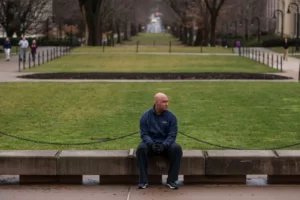Today’s middle-income Americans won’t be able to afford tomorrow’s long-term care.
New studies and research from both private and public sources paint the same harsh picture: By 2029, the numbers of middle-income seniors needing long-term care will double to 14.4 million. By then, long-term care costs will also escalate, according to projections recently released in Genworth’s 15th annual study. From 2017-2018, costs in all long-term care categories increased above the 2.1% rate of inflation, at an average of 3 percent, the financial company found. But costs in some care categories (a semi-private room in a nursing home, or in an assisted living facility), increased to 4 percent and 7 percent, respectively–two and three times the rate of inflation.
Business reporters can deliver a series of enterprise stories that will get the conversation going among their readers by looking into one or more of the questions raised by this public health care crisis:
Why is there a long-term care crisis?
Longevity is increasing, and with come the increasing numbers of middle-income seniors who will need support services. Approximately 60 percent will need a cane, walker, or wheelchair to remain mobile, and 20 percent will need help with bathing, eating, and dressing, according to The U.S. Health and Retirement Study, an ongoing study conducted by the National Institute on Aging and the Social Security Administration. Assemble a panel of a cross-section of readers and ask them the uncomfortable question no one wants to ask: How are they planning for their future long-term care needs? Include a health care expert in your discussion, such as Tricia Neuman, director of the Kaiser Family Foundation’s Medicare policy program.
What public policy solutions are there?
Very few, in the United States. Many Western democracies provide their citizens with long-term care, but in the United States, long-term care support services are limited to low-income seniors who qualify for Medicaid. Seniors with annual assets of $25,000 to $74,000 are “The Forgotten Middle,” says Health Affairs, a public policy journal, and they lack the resources necessary for housing and health care they need. Howard Gleckman, a member of the Long-Term Financing Collaborative, is a good source to interview on this issue.
Do your readers have a plan for their future health care needs?
By the time seven in every 10 seniors reach the age of 65, they will need some type of long-term care, according to the U.S. Department of Health and Human Services. Yet sales of long-term policies are dropping, and currently, only 15 companies offer policies, which get more expensive with the policyholder’s age. Some financial experts advise clients to earmark money for long-term care separately in planning their retirement budgets. What plans have your readers made for their future health needs?










